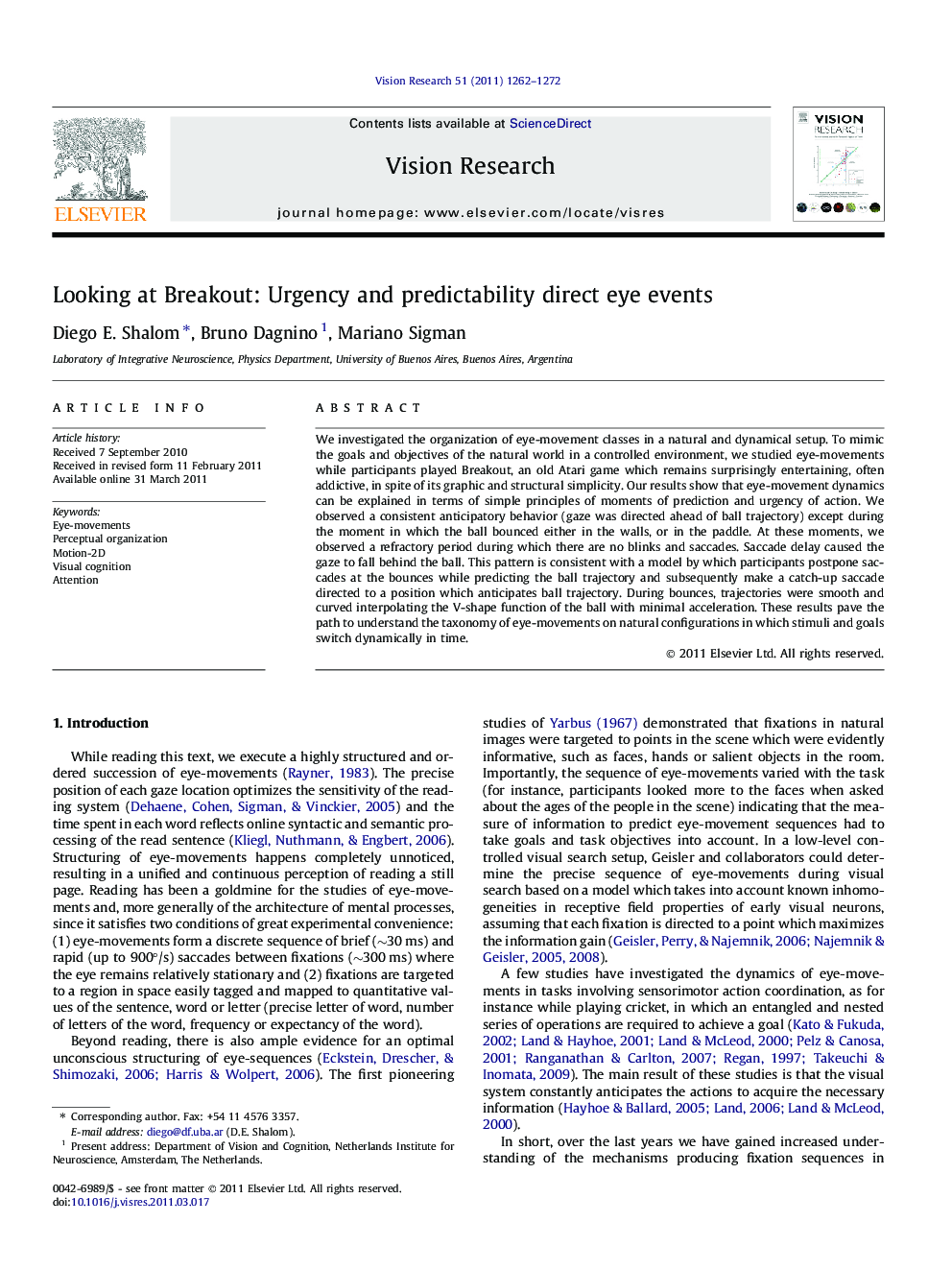| Article ID | Journal | Published Year | Pages | File Type |
|---|---|---|---|---|
| 6203791 | Vision Research | 2011 | 11 Pages |
We investigated the organization of eye-movement classes in a natural and dynamical setup. To mimic the goals and objectives of the natural world in a controlled environment, we studied eye-movements while participants played Breakout, an old Atari game which remains surprisingly entertaining, often addictive, in spite of its graphic and structural simplicity. Our results show that eye-movement dynamics can be explained in terms of simple principles of moments of prediction and urgency of action. We observed a consistent anticipatory behavior (gaze was directed ahead of ball trajectory) except during the moment in which the ball bounced either in the walls, or in the paddle. At these moments, we observed a refractory period during which there are no blinks and saccades. Saccade delay caused the gaze to fall behind the ball. This pattern is consistent with a model by which participants postpone saccades at the bounces while predicting the ball trajectory and subsequently make a catch-up saccade directed to a position which anticipates ball trajectory. During bounces, trajectories were smooth and curved interpolating the V-shape function of the ball with minimal acceleration. These results pave the path to understand the taxonomy of eye-movements on natural configurations in which stimuli and goals switch dynamically in time.
⺠Eye-movements follow simple principles of predictability and urgency of action. ⺠Trajectories are systematically anticipated by about 200 ms only excepting bounces. ⺠Bounces inflict a refractory period of blinks and saccades and minimize velocity.
